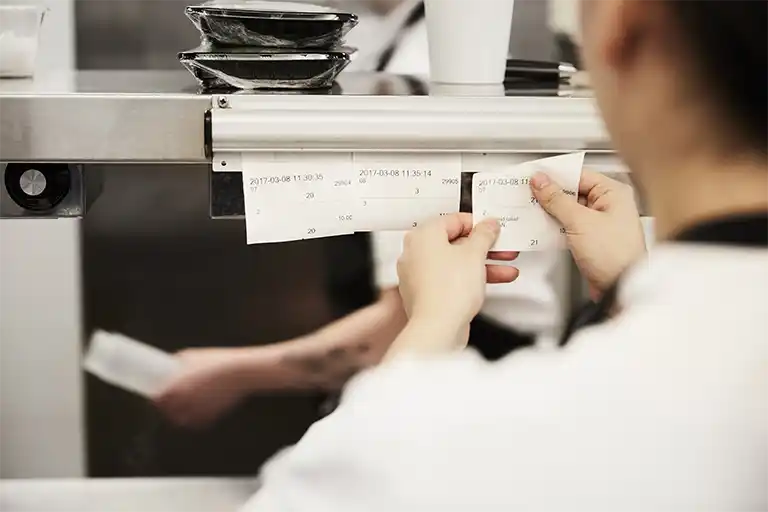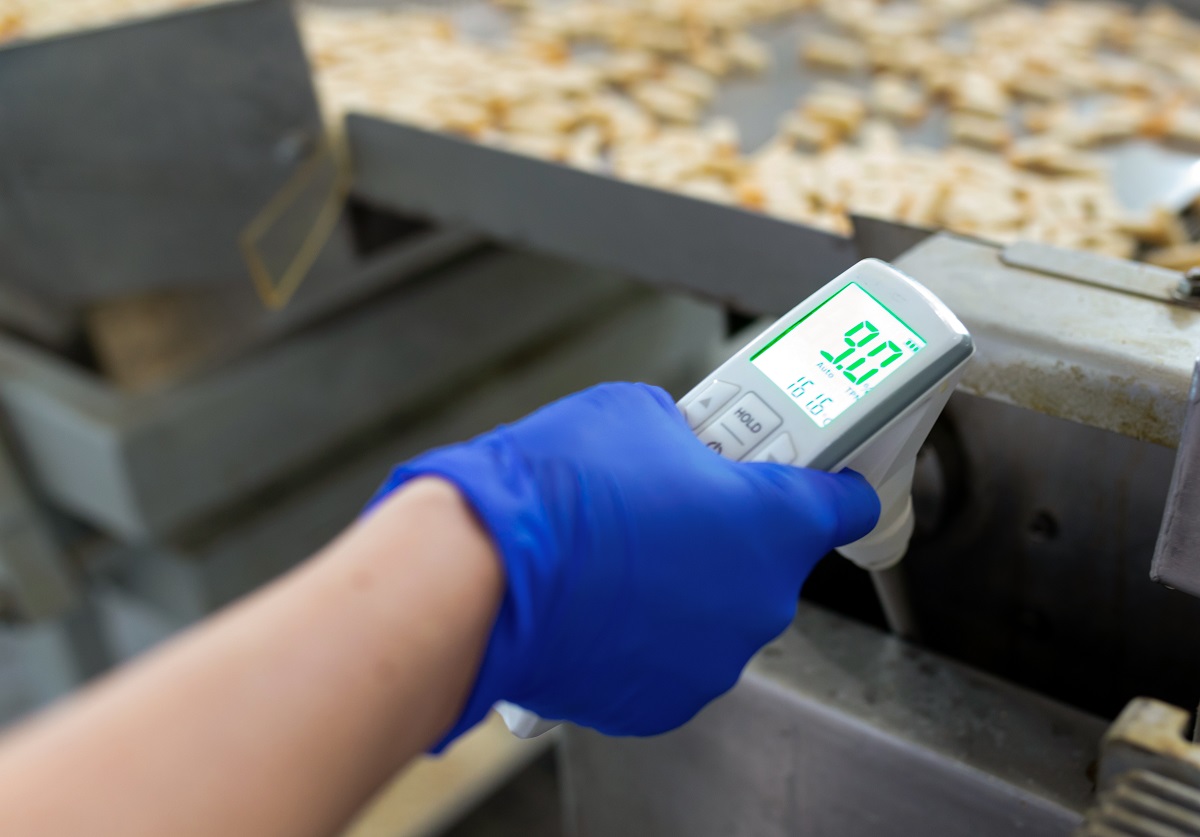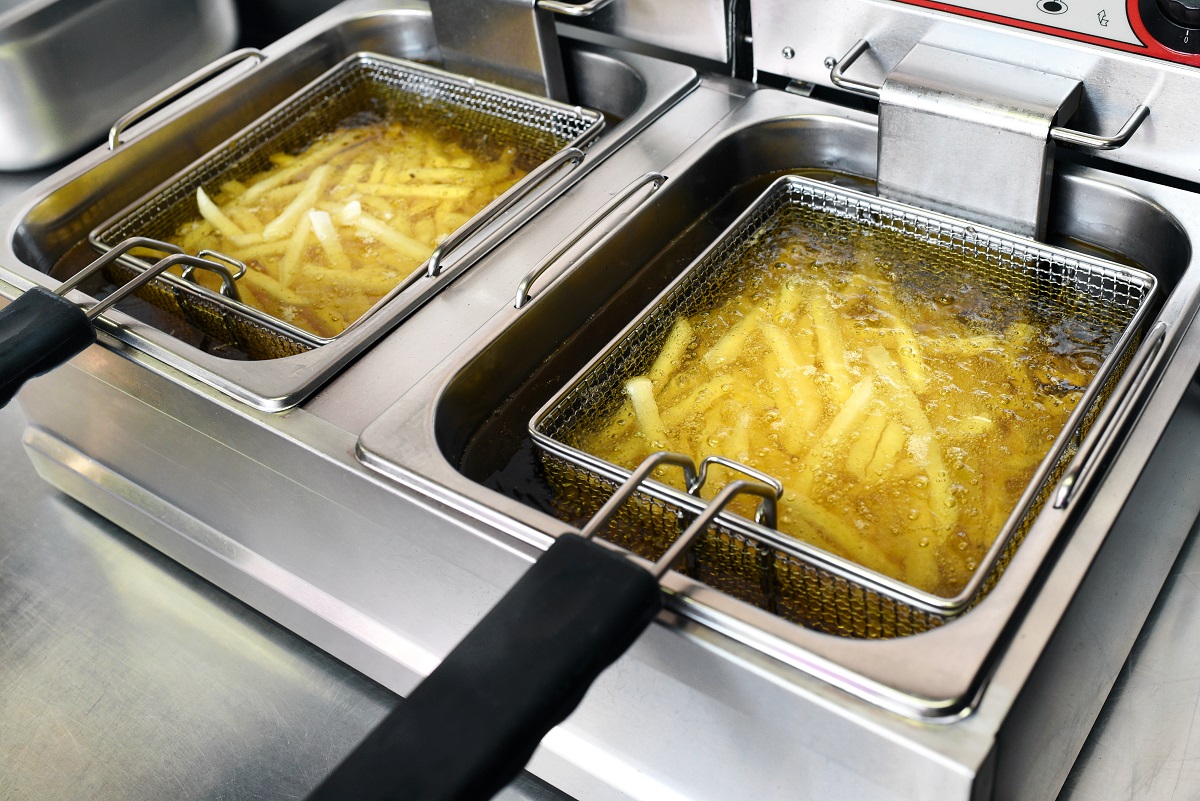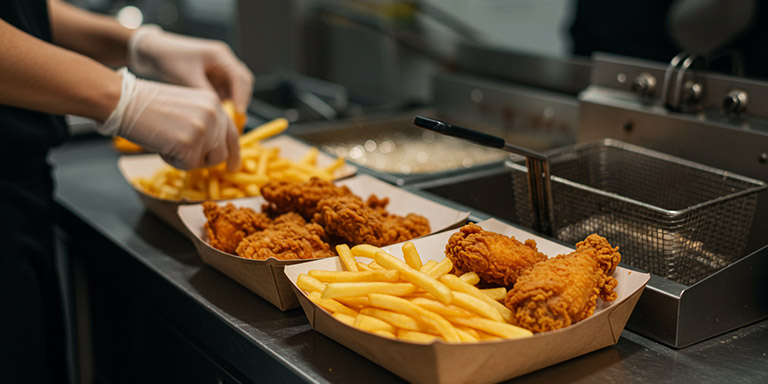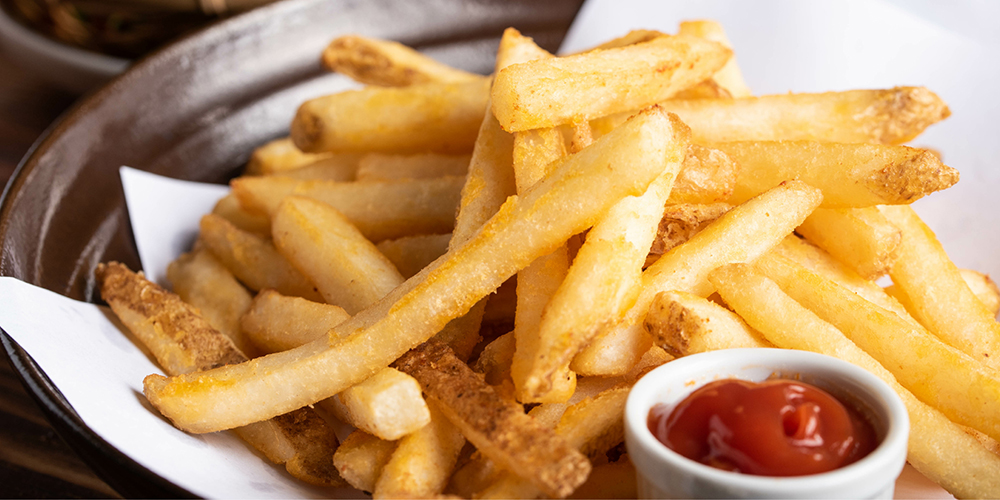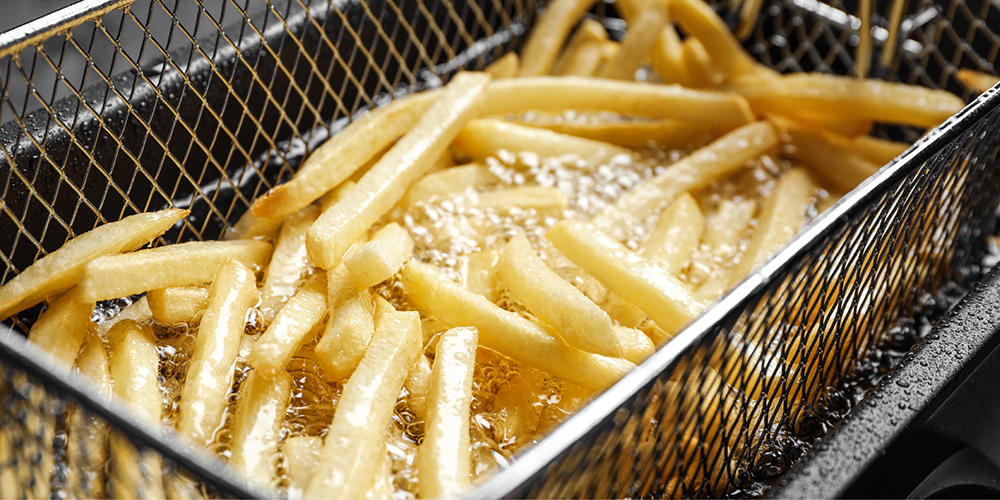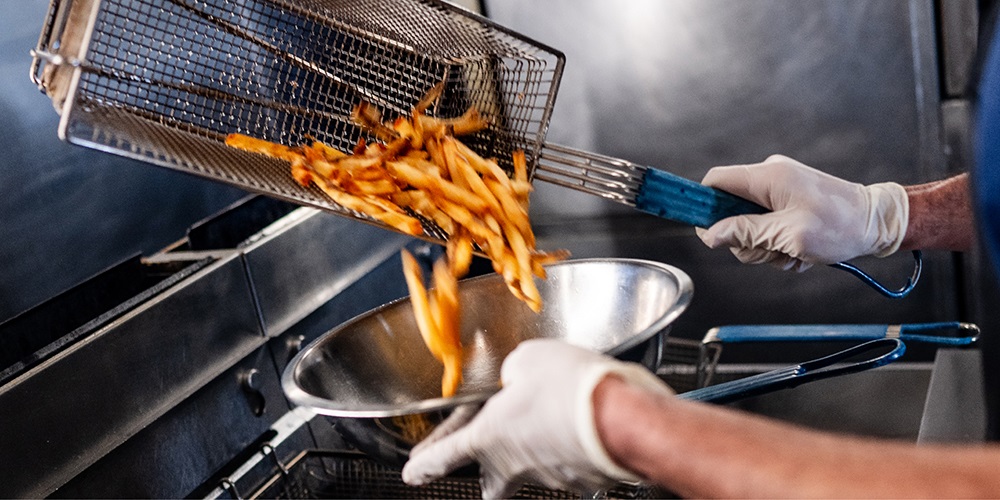Updated 04/08/2024
Running a restaurant operation is a fast-paced experience. So much so that between managing your staff and ensuring your customers’ satisfaction, you might forget your primary aim and what keeps the whole ball rolling: your return on investment (ROI).
ROI is the calculation used to determine the profitability of your restaurant and the investments made to further your success. For example, if a restaurant invests in tablets for every table—whether it’s to entertain kiddos or to place orders electronically—does this increase the dollar value of each family’s meal? ROI tells you whether or not this was a good investment.
Over time, your restaurant ROI can make or break your venture—and we’re confident you’d like to fall on the left side of the scale.1 Here’s how.
Improve ROI for Long Term Success
Many new restaurateurs are so focused on cooking great food that they forget that the number one ingredient for their success is return on investment (ROI).
Some facts for you that confirm this:
- Nearly 60 percent of new restaurants fail within the first year
- An alarming 80 percent shutter before the fifth year
Restaurants that focus on ROI are more likely to be their customers’ favorite places to eat for many years to come. How? By embracing technology to improve efficiencies and connect with customers.
Back Of House Technology
Your customers don’t see it, but back-of-house (BOH) technology is vitally important to their experience at your restaurant. Improved efficiency is just one byproduct of installing back-of-house technology, and it can also impact everything from employee safety to food quality.
The evidence, however, is more powerful than our mere words:
- KBP Foods, which operates more than 360 KFC, Taco Bell and Long John Silver’s restaurants in 14 states, utilizes our restaurant cooking oil management system and has seen dramatic results. This type of system automates the delivery, storage, handling, and disposal of fryer oil for restaurants—contributing to employee safety and better food quality.
- The Restaurant Technologies solution also features a web-based monitoring tool that tracks usage and filtration data, which helps managers understand and control oil quality and cost. These daily insights also alert managers when restaurants are not properly managing the cooking oil.
- KBP Foods has increased the life of its shortening and also removed contaminants that can affect the color, taste, and smell of the food. They’ve also seen a direct correlation between their usage of the oil management system and food quality and profitability.
Oil management systems are not just for fast-food restaurants. Bar Louie, a neighborhood bar and eatery that operates 70 locations, also partnered with Restaurant Technologies to manage its oil after a franchise owner noticed employees deviating from their standard oil operating procedures, which can affect the quality of the oil and ultimately food quality.
As a result of installing Restaurant Technologies’ oil management solution, Bar Louie now uses approximately 100 pounds of oil less per week. The chain has also seen a 50 percent decrease in workers’ compensation claims now that kitchen employees no longer need to handle hot oil. Plus, food quality is up and labor costs are down.
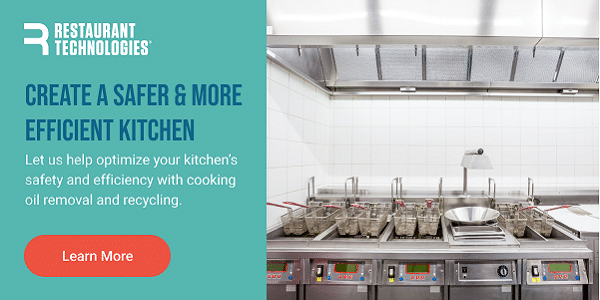
Front of House Technology
Today, front-of-house (FOH) restaurant technology comes in many forms and speeds up the process of ordering and bill paying, which resonates with consumers. The ease of use found in iPad kiosks and tabletop tablets appeals to smartphone users and can also reduce labor costs and dining times in the long run.
As labor costs continue to rise, numerous restaurants are researching ways to reduce employee headcount using this type of technology. Near the end of 2015, Panera Bread rolled out Panera 2.0, which entailed outfitting 400 locations with iPad order kiosks to replace cashiers. Panera Bread found numerous benefits to using kiosk technology. The digital interface allowed them to easily communicate the ingredients and nutritional value of all its menu items, which led to more personalized orders. The kiosks also resulted in shorter lines, improved accuracy of orders, and reduced employee headcount.
Other restaurants, such as Olive Garden, are testing tabletop tablets to improve the customer experience. The restaurant chain added tabletop ordering systems at select locations a few years ago to gauge the effect and found that those locations with tabletop tablets saw faster dining times and higher tip percentages. Customers are happier with the faster, more convenient service and restaurants can serve more diners per night.
An Optimized Website
Where do customers go when they want to see your menu, location, or hours of operation? Your website. Is it mobile-friendly? Easy to navigate? If not, they might just move on to the next place.
A responsive website is a mobile-friendly website that adapts to all screen sizes including:
- Smartphones
- Tablets
- Laptops
- Computer screens
Not only does a responsive site keep your customers happy, but it also keeps Google happy, which is critical. In 2015, Google Search rolled out an update that increased the effect of its mobile-friendly ranking signal to help users find websites that are relevant and mobile-friendly. As a result, a website that is not mobile-friendly will not rank as high as one that is—and you stand the risk of falling to the second page of search term results.
Mobile Ordering
Ordering food from a restaurant with a smartphone is a preferred method among most diners. Most mobile technologies can track certain characteristics of its users, including customer location, providing restaurants with valuable data.
Studies show that mobile and online ordering capabilities can improve sales by encouraging customers to spend more and visit more often due to convenience. A Deloitte survey found that 40 percent of frequent restaurant visitors prefer to order online and will spend 26 percent more per order at quick service restaurants (QSRs) and 13 percent more in casual and fast casual establishments. The number of visits tends to increase as well because the technology makes it easy to repeat previous orders.
The survey also revealed the options that restaurant customers value most: online ordering, payment flexibility, and customization. These options can have a direct impact on dining frequency, check size, customer conversion and loyalty.
Offering In-App Exclusives and Promotions
In this day and age, an optimized website is just the tip of the iceberg when it comes to remaining relevant, on the forefront of patrons’ minds, and a step ahead of your competition.
Today, mobile apps are deemed essential for restaurants, particularly those that operate in the QSR and fast casual space. It allows you to track your customer behavior, enhance communication with your customer base, expand brand visibility, and encourage customer retention.2 For your customers? Three words: Expedience, value, and convenience.
And yet, implementing a restaurant app isn’t a one-and-done endeavor. To capitalize on the opportunity to build customer loyalty, restaurants are increasingly turning to digital-only, in-app exclusives and promotions to drive more business and turn infrequent customers into regulars. Eateries ranging from KFC to Mcdonald’s offer steep discounts, customized promotions, and rewards points to obtain this, while Chipotle—which has raked in $3 billion in digital sales—not only offers in-app deals but also push notifications on order statuses.3
Restaurant Marketing
Restaurant marketing has evolved as it now embraces the power of social media marketing as a way to improve a restaurant’s ROI. Social media platforms offer restaurateurs opportunities to monitor consumer interactions, bolster communication, and magnify their brand’s presence, all of which are instrumental in fostering customer loyalty and ensuring sustained profitability.
The integration of social media into your marketing efforts is not merely about maintaining relevance; it’s a strategic move to harness the collective impact of your marketing campaigns. By leveraging the insights gleaned from recent posts and online engagements, any restaurant owner can fine-tune their strategies, ensuring that every dollar spent on marketing yields a significant return on investment. This approach mirrors the innovative tactics used by industry giants, from KFC to Chipotle, who leverage digital tools to offer exclusive in-app promotions, driving both brand loyalty and increased revenue.
Engaging with social media transcends traditional advertising; it’s a vital, ongoing marketing investment. It’s about creating a narrative that resonates with potential visitors, turning interest into long-term patronage. In the competitive landscape of the restaurant industry, where experience, value, and convenience are paramount, the utilization of social media marketing is not just advisable—it’s imperative to outshine competitors and captivate the ever-evolving tastes of the consumer market.
Measure and Adjust
Successful restaurant operators continually measure and adjust their marketing to understand their restaurant ROI. Marketing can quickly eat into your overall budget so it’s imperative to continually measure your efforts and adjust as needed.
As marketing tactics and technology continue to evolve at a lightning-fast pace, it’s often difficult to not only stay on top of the latest trends but to also know which will be most effective for your particular style of restaurant. Most restaurateurs will try many of the latest marketing tactics to attract new customers. The successful ones will use metrics to track their efforts, keeping the tactics that prove to be successful and eliminating the ones that are not.
Once you have your metrics in place, it’s important to understand this data in comparison to your competitors. Develop a standard set of metrics to use as a benchmark to gauge your success or failure. This will give you a competitive advantage with your marketing and allow you to quickly determine how effective your strategy is in the marketplace. By doing this, you’ll begin viewing your marketing spend as an investment in your business rather than an expense.
When you embrace technology for all aspects of your business, you can improve efficiencies, make stronger connections with your customers, and ultimately, find long-lasting success.
Streamlining Operations for Cost Efficiency
Your restaurant ROI also hinges on the practices you employ to ensure that your business operations run as swiftly, accurately, and cost-effectively as possible.
Fortunately, we live in an era in which manual, time-consuming tasks have been replaced with technology-driven solutions. All-in-one POS systems that feature self-service kiosks and online reservations, operations management software, and data analytics that evaluate menu profitability—all can be leveraged to minimize manual labor (and the costs that come with it), guarantee a certain level of precision and accelerate processes ranging from marketing to controlling food costs.4
There are a host of ways to maximize your time and efforts in the name of an improved ROI, such as:
Reducing Food Waste Through Better Inventory Management
One of the most indispensable accessories restaurants can have in their toolkit is an inventory management system.5 These systems offer a comprehensive perspective of your kitchen, with capacities that include:
- Tracking food prices and their fluctuations
- Assessing supplies
- Forecasting supply needs
- Meeting ordering demands
Additional policies and techniques—such as standardized recipes, sustainability strategies, ordering to prevent spoilage, and running deals to utilize unused food—can also be implemented to manage your food costs and avoid waste.6
Optimizing Staff Scheduling to Match Customer Flow
Restaurants are nothing if not dynamic. The pace of the business vacillates right along with the seasons, while shifts in the economy—both downturns and upticks—can have a massive effect on your staffing needs.
Leveraging restaurant staffing software can help you plan accordingly for these changes and also ensure the appropriate number of hands-on board to facilitate smooth operations and satisfied patrons.7 This is achieved through features and functions that give restaurant managers the ability to:
- Monitor employee hours
- Evaluate employee availability
- Automate schedules
- Announce schedule changes
Ultimately, restaurant staffing software can help you optimize labor costs—and boost your team members’ happiness.
Negotiating with Suppliers for Better Pricing
Your waitstaff, bartenders, sous chefs, and line cooks—as well as every other employee that makes up the DNA of your venue—play a pivotal role in your operations, but few are as imperative as your suppliers. You might enjoy a mutually beneficial bond with your present vendors but amidst inflation and the rising cost of food, there’s room, if you will, to negotiate for better pricing.
This will look different for every establishment, of course, but a handful of the leading strategies include:
- Performing meticulous research to ensure you have a thorough understanding of the market rates
- Offering a long-term contract
- Committing to ordering in bulk
- Establishing a strategic partnership in which marketing campaigns and specific products are used to increase visibility and sales for both parties
Enhance Your Restaurant ROI with Restaurant Technologies
From revamping your marketing efforts to modernizing your inventory audits, there are dozens of ways to bolster your restaurant ROI and increase the chances of being rewarded for the mental, physical and emotional investment that’s required of any thriving restaurant.
Restaurant Technologies can further your efforts. With solutions ranging from hood to flue cleaning to automated cooking oil management, we can take care of the nuances of several of your BOH obligations. In turn, you can pivot your focus to your patrons—and provide them with the dining experience that will turn them into repeat customers.
Contact us today to get the dialogue going.
For more information on improving your restaurant’s profit, be sure to read our article on kitchen automation and tips for managing a restaurant.
Sources:
- Eposnow. Restaurant roi: what returns do restaurants bring https://www.eposnow.com/us/resources/restaurant-roi/-staff-part-2-develop-a-hiring-process/
- RestoLabs. 3 reasons why mobile apps are necessary for your restaurant. https://www.restolabs.com/blog/3-reasons-why-mobile-apps-are-necessary-your-restaurant
- Nation’s Restaurant News. Restaurant brands update their apps to attract value-and-convenience-seeking customers. https://www.nrn.com/marketing/restaurant-brands-update-their-apps-attract-value-and-convenience-seeking-consumers
- Restaurant365. Restaurant business operations: six ways to increase efficiency and improve margins. https://www.restaurant365.com/blog/restaurant-business-operations-six-ways-to-increase-efficiency-and-improve-margins/
- Booking Ninjas. The importance of inventory management. https://www.bookingninjas.com/blog/4-reasons-why-restaurant-inventory-management-matters
- Toast. How to track and reduce restaurant food waste. https://pos.toasttab.com/blog/on-the-line/reduce-food-waste
- Perfect Venue. How to find the right restaurant staffing software. https://www.perfectvenue.com/post/restaurant-staffing-software
